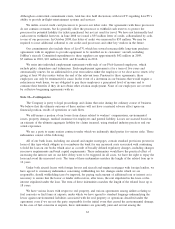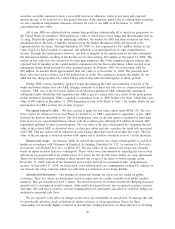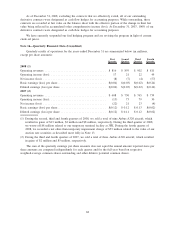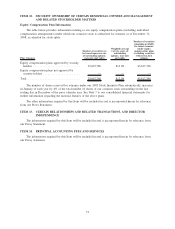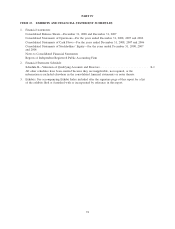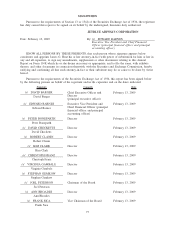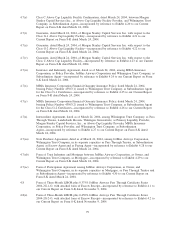JetBlue Airlines 2008 Annual Report Download - page 80
Download and view the complete annual report
Please find page 80 of the 2008 JetBlue Airlines annual report below. You can navigate through the pages in the report by either clicking on the pages listed below, or by using the keyword search tool below to find specific information within the annual report.ITEM 9. CHANGES AND DISAGREEMENTS WITH ACCOUNTANTS ON ACCOUNTING AND
FINANCIAL DISCLOSURE
None.
ITEM 9A. CONTROLS AND PROCEDURES
Evaluation of Disclosure Controls and Procedures
We maintain disclosure controls and procedures (as defined in Rule 13a-15(e) under the Exchange Act)
that are designed to ensure that information required to be disclosed by us in reports that we file under the
Exchange Act is recorded, processed, summarized and reported as specified in the SEC’s rules and forms and
that such information required to be disclosed by us in reports that we file under the Exchange Act is
accumulated and communicated to our management, including our Chief Executive Officer, or CEO, and our
Chief Financial Officer, or CFO, to allow timely decisions regarding required disclosure. Management, with
the participation of our CEO and CFO, performed an evaluation of the effectiveness of our disclosure controls
and procedures as of December 31, 2008. Based on that evaluation and as described below under
“Management’s Report on Internal Control Over Financial Reporting,” we have identified a material weakness
in our internal control over financial reporting (as defined in Exchange Act Rules 13a-15(f)). Solely as a result
of this material weakness, our management, including our CEO and CFO, concluded that our disclosure
controls and procedures were not effective as of December 31, 2008.
Management’s Report on Internal Control Over Financial Reporting
Our management is responsible for establishing and maintaining adequate internal control over financial
reporting (as defined in Rule 13a-15(f) under the Exchange Act). Under the supervision and with the
participation of our management, including our CEO and CFO, we conducted an evaluation of the
effectiveness of our internal control over financial reporting based on the framework in Internal Control—
Integrated Framework issued by the Committee of Sponsoring Organizations of the Treadway Commission.
Based on that evaluation, our management concluded that, due to the material weakness described below, our
internal control over financial reporting was not effective as of December 31, 2008.
A material weakness is a deficiency, or combination of deficiencies, in internal control over financial
reporting such that there is a reasonable possibility that a material misstatement of the company’s annual or
interim financial statements would not be prevented or detected on a timely basis.
The specific material weakness identified by our management was that we did not maintain effective
controls to timely monitor and review the performance of our physical inventory observations and/or cycle
counting procedures and related count adjustments in our automated inventory system, resulting in errors in
the recorded inventory balances. In addition, we determined that our new inventory system, which we
implemented in the third quarter of 2008, contained a programming error that caused certain inventory items
to be undervalued. Although these deficiencies did not result in a material misstatement for the period ended
December 31, 2008 or any prior periods, they did result in accounting adjustments and a reasonable
probability that a material misstatement of inventory balances in our annual or interim financial statements
would not have been prevented or timely detected.
Ernst & Young LLP, the independent registered public accounting firm that audited our Consolidated
Financial Statements included in this Annual Report on Form 10-K, audited the effectiveness of our internal
control over financial reporting as of December 31, 2008. Ernst & Young LLP has issued their report which is
included elsewhere herein.
71




